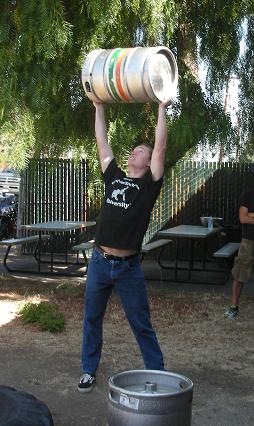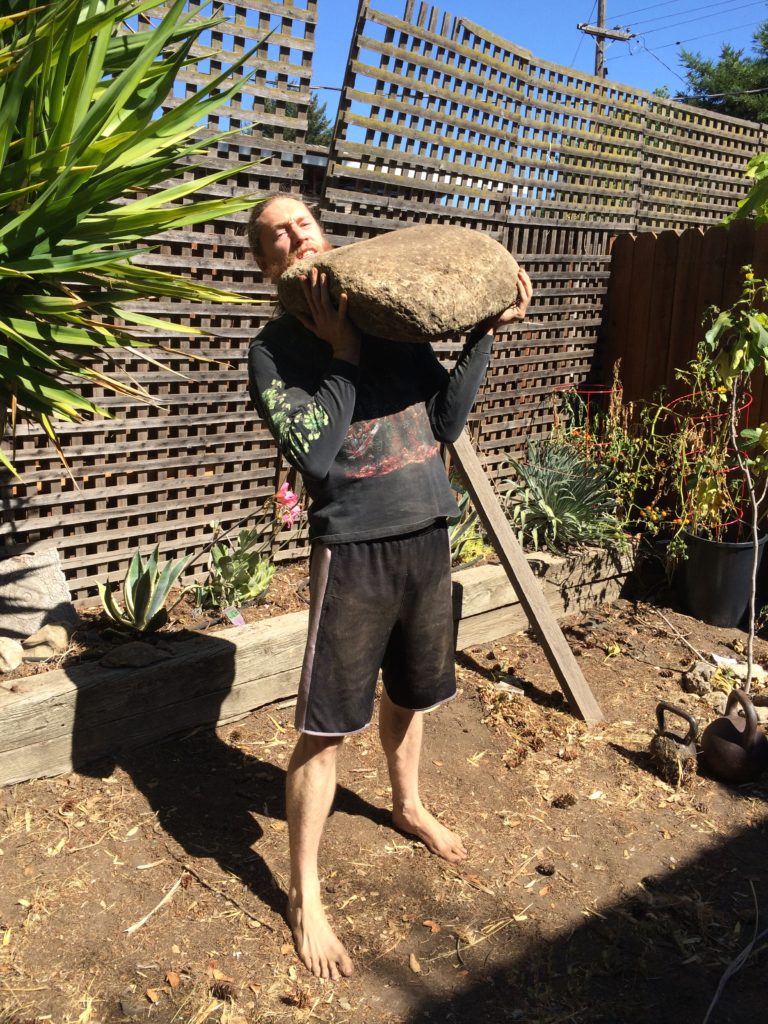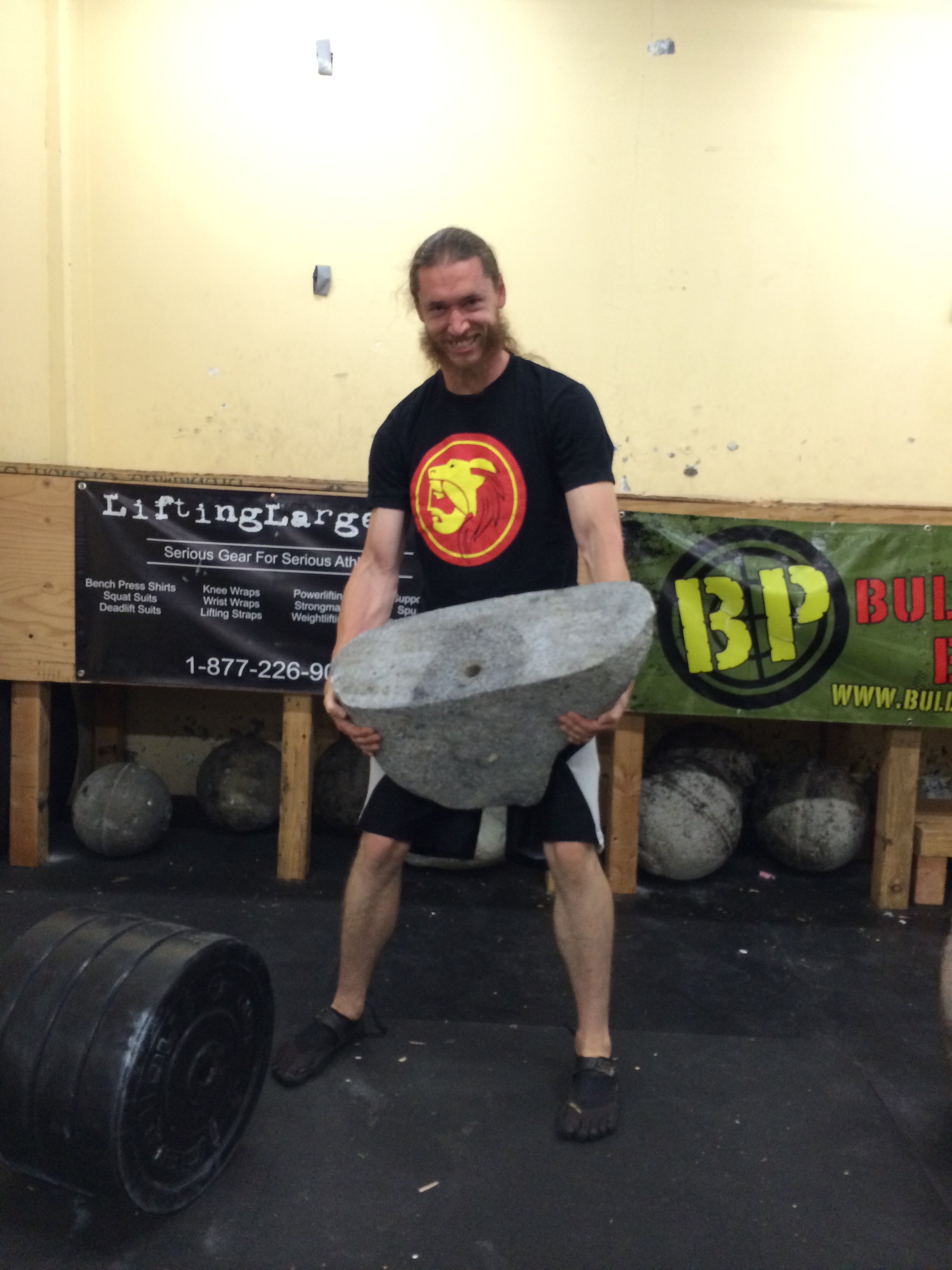Recently I was asked about odd object training. Turns out I didn’t have a decent get started article on the topic, so that’s what this is for. In it I’ll cover the different types of odd objects, how to train them, including what you’re focusing on, and of course, progression.
Types of Odd Objects
The main odd objects are the following:
- Sandbag
- Barrel/Keg
- Stone
- Log
There’s some examples of all of these on the Feats of Strength – Odd Object Lifting page, including videos of each in action.
Them being odd objects there are a variety of other objects that may be even more odd than this.

Exercises with Odd Objects
There are most of the basics.
- Deadlift
- Clean
- Continental
- Shoulder
- Row
- Squat
- Press
- One Arm Press
- Push Press
- Jerk
- All types of carries (See this article for details on positions)
- Throwing
There are some specialized ones too, depending on the object. Sandbags can be used for a version of the Turkish getup.
One Type of Odd Object or Multiple?
In general, I would say that it is best to train with one type of odd object at a time. Pick one from the above list, whatever you have on hand, and you can build your training around it.
Of course, this is not the only way to go. If you have access to them all then you could rotate which one you use each workout, or even do workouts that involve all of them.
There is no one right way to do it. I just mention working with one at a time as that will keep you focused on it and thus practicing with it more so. Since practice and technique are big parts of lifting odd objects this should mean faster gains.
One Weight or Many?
This primarily depends on what you have access too. If you have a stone, adding or subtracting weight isn’t really in the cards.
If you have a sandbag it may be possible. A log bar, definitely…but not an actual log!
How you train depends on whether you have adjustable weights. If you do then it’s not all that different from typical barbell training.
If you don’t, then the progression is made with volume and what you can accomplish. I’ll focus on this latter category.
HOW You Can Lift
Let’s say you have a 150 lb. stone. What can you do with it?
The first stage is simply deadlifting the thing off the ground. This could be regressed even further to simply breaking it up off the ground but without getting to lockout.
Do this once. Do it multiple times. Volume is going to be a huge part of progression.
But eventually you want to enhance what you can accomplish. Can you get the stone up to chest level?
Can you get it to one shoulder?
And eventually, can you lift it overhead?
Maybe you have two stones. One is for the lower body lifts. And the lighter one for going overhead. Years back I had two rocks in my yard and this is exactly how I trained with them.

Combining with “Normal” Object Training
The thing to keep in mind is either muscles groups or movement patterns. If you do a bunch of deadlifts with stones, you do not necessarily need to do a bunch of barbell deadlifts. If you press stones overhead it can interfere with training other forms of pressing be it handstand pushups or kettlebells or barbells.
That doesn’t mean you can’t do it all. It depends on volume and severity of the workouts as well as frequency and recovery.
In other words, you must train smart. Just remember that progression is the name of the game. Improve what you can do today from last time and you’re moving in the right direction.
Odd objects build functional strength simply because most of the objects we encounter in the real world aren’t made to be lifted like barbells are. They can certainly be used to put on size, but also just to build what I like to call Deceptive Strength.

